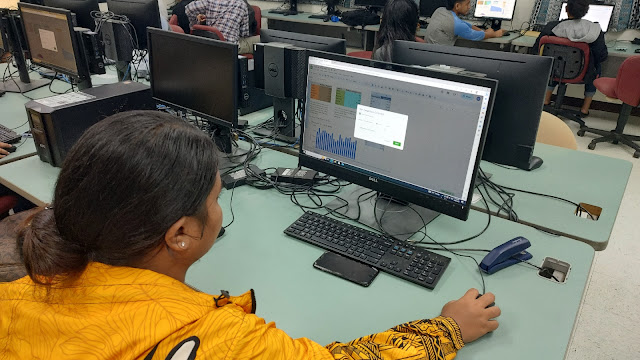Acceleration day three

The day started on high altocumulus clouds at sunrise. Laboratory three opened with an overview of the past work on velocity and acceleration. Laid out this way, Wednesday is just the week two equation d = v₀t plus the Monday week three equation of d = ½at² resulting in d = ½at² + v₀t. Perhaps the idea of v₀ should be emphasized in week two? Memichin drops and times while Stella records. This term I encouraged two member teams. Ian drops and times while Pevirleen records data. Renae and Alathea set up to gather data. The class has health career opportunities students visit to view the periodic table. The area west of the classroom is undergoing changes. The right is the future teaching and learning health clinic. Power lines had to be rerouted due to the building. Memichin Siniann working at the five meter mark. Sometimes physical science is fun. Sinia




